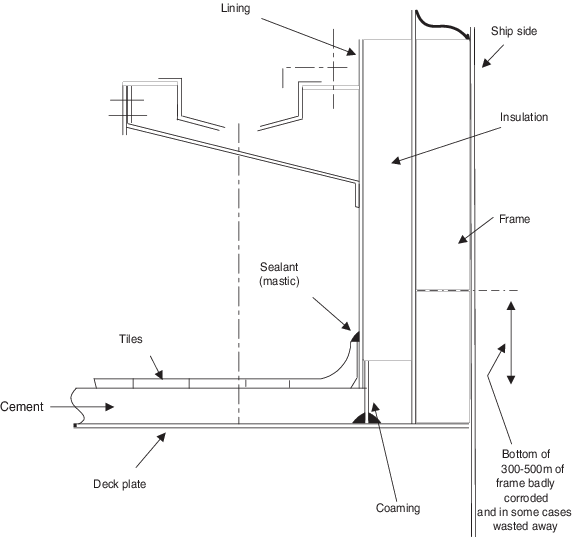3.1.1 The Surveyor
is to establish which tanks will be required to be emptied, cleaned
and gas freed for entry for the internal survey of the hull. Other
spaces are to be examined similarly, with the emphasis being placed
upon wet spaces and spaces of high humidity for the stripping of linings
and insulation where necessary. The wet spaces are laundry, bathrooms/
toilets (see
Figure 9.3.1 Typical shipside wet space defect)
and galleys. The high humidity spaces are Plenum Chambers and ATU
spaces.

Figure 9.3.1 Typical shipside wet space defect
3.1.2 Owners should
note that, as far as possible, preparation for the survey of storerooms,
tanks and machinery spaces, should be progressed in advance of the
Surveyor’s visit.
3.1.3 All open bilges
should be drained and cleaned.
3.1.4 Prior to commencing
the survey, the Surveyor should ensure that, where applicable, the
following plans and information are available on board.
-
The C11(N).
-
Main structural plans.
-
Previous repair history.
-
Reports of leakage.
Where this information is not available, advice should be sought
from the LR Naval liaison office.
3.1.5 The Surveyors
should note that some UK repair yards normally clean and shot blast
all tanks before surveys take place. This is unlike the practice in
the commercial world and therefore the Surveyors may not be able to
carry out the survey before this time. It is recommended that every
effort is made to survey the tank after cleaning and before shotblasting.